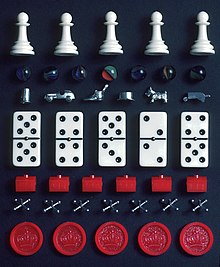Rules and aims

However, if the players decide to play with only three bases, they are arguably playing a different game. There are exceptions to this in that some games deliberately involve the changing of their own rules, but even then there are often immutable meta-rules.
Rules generally determine the time-keeping system, the rights and responsibilities of the players, and each player's goals. Player rights may include when they may spend resources or move tokens.
The rules of a game are to be distinguished from its aims. For most competitive games, the ultimate ‘aim’ is winning: in this sense, checkmate is the aim of chess . Common win conditions are being first to amass a certain quota of points or tokens (as in Settlers of Catan), having the greatest number of tokens at the end of the game (as in Monopoly), or some relationship of one's game tokens to those of one's opponent (as in chess's checkmate). However, when we talk about the aims of a game, we also refer to intermediate aims: the things that you have to do in order to win the game.

For instance, an intermediate aim in football is to score goals, because scoring goals will increase your likelihood to win the game (but isn't alone sufficient to win the game).
Aims are not just a 'special' kind of rules: the difference between the rules of a game and the aims of a game is a fundamental one. This can be seen by considering some examples. The aim of chess is to checkmate, but although it is expected that players will try to checkmate each other, it is not a rule of chess that a player must checkmate the other player whenever he can (as a matter of fact, unskilled players often fail to take the opportunity to do so). Similarly, it is not a rule of football that a player must score a goal if he shoots a penalty (it is only expected, and not required, that he will try). On a general level, the distinction between the rules and the aims of a game can be characterised as follows: an aim identifies a sufficient condition for successful action, whereas the rule identifies a necessary condition for permissible action .
While meeting the aims often requires a certain degree of skill and (in some cases) luck, following the rules of a game merely requires knowledge of the rules and some careful attempt to follow them; it rarely (if ever) requires luck or demanding skills.

Comments
Post a Comment